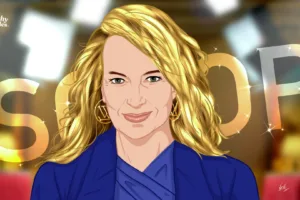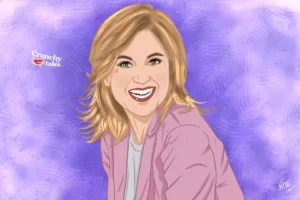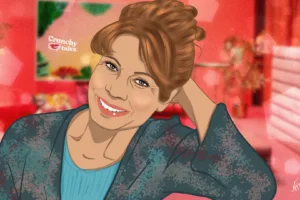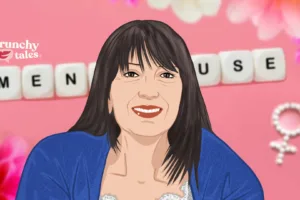Laurie J. Cameron: “Mindful Awareness Is At The Heart of Self-Mastery”
Does ‘Mindfulness‘ make sense to you? If you want to tame your wild mind but you are still struggling to figure out how it works and how it could fit into your daily midlife routine, ask Laurie J Cameron. Her clear and surefire way to Mindfulness will make you want to explore this subject even more.
National Geographic author of ‘The Mindful Day: Practical Ways to Find Focus, Calm and Joy from Morning to Evening‘, TEDx speaker, founder and CEO of PurposeBlue Mindful Leadership, Laurie integrates emotional intelligence, positive psychology, mindfulness, compassion and neuroscience into practical strategies for flourishing in our modern world.
Laurie, how would you define mindfulness for someone who is a complete stranger to it?
When many people think of mindfulness, the phrase “being present” comes to mind. You might think even more specifically of attention or awareness, which has to do with what the mind is attending to, what it is taking in. These two components are like a flashlight and a floodlight. Concentrated attention, or focus, and expansive attention, or awareness. What often gets left out of our understanding of mindfulness are the qualities of mindful awareness- such as openness, acceptance, impermanence, gratitude, and interconnection. Mindfulness is about paying attention with openness and compassion, and knowing we are all connected.
How did you come to start practising mindfulness?
I was raised by a spiritual, loving mother, who modelled for us contemplative practices like prayer, song, connection and gratitude on a daily basis. We had rituals and routines at home and we went to church a few times a week. We practised and learned the benefit of stillness and sacred connection in our home and our community. In my 20s, I became a management consultant with Accenture and in 1995, my client Chau Yoder, an engineer from Vietnam, introduced me to mindfulness. In a conference room during lunchtime, she taught me mindful breathing—to stop, breathe, and “be in the present” to simply bring my busy, future-oriented mind into what was happening right here and now. I began to study and train with Thich Nhat Hanh and the monastics in monasteries in Plum Village, France and in the US for the next 25 years.
Nowadays, there are more and more people interested in mindfulness and yet there are also plenty of schools, methods and ways to it that sometimes are a kind of diluted version of meditation. You seem to have a different and resolute approach to mindfulness that might tackle our life issues. Can you tell us more?
I hold mindfulness as a body of teachings and practices that help us to cultivate present-moment awareness. Practising mindfulness is about learning, bit by bit, how to train your attention to stay in the present instead of ruminating over the past or racing into the future. The more you practice, the more mindful you become, and the more vividly you see the world as you tune in to the moment at hand. In time, you cultivate a different way of being that is more focused, aware, and intentional. But more than just focusing your mind, it’s about your mindset—how you view the world. Mindfulness reinforces a mindset of being open, receptive, accepting, and compassionate. And that starts with noticing your natural tendency to judge, assume you already know something or resist what life brings or what is out of your control—things that everyone does. People often ask me about the difference between mindfulness and meditation. The two are distinct, yet tightly connected: You can be mindful without meditating, but the research shows that mindfulness meditation is the surefire way to becoming more mindful. Here’s the incredible opportunity: You can learn to radically shift how you relate to your daily experiences and other people. The awareness that arises from mindful attention to your inner thoughts, emotions, and perceptions begins to bring more vivid detail for knowing yourself. This self-awareness is at the heart of self-mastery— of being the person you want to be. It amounts to having a longer, richer life because you are present for much more of it. And we can all do this.
In your book “The Mindful Day: Practical Ways to Find Focus, Calm, and Joy from Morning to Evening”, you help us to overcome our negative thoughts and navigate through busy schedules, difficult emotions and relationships with a purpose. What are some mindful practices that are simple to integrate into our day-to-day life?
What follows are the basics—and throughout my book ‘The Mindful Day’, you can find specific applications and ways to weave these, along with additional practices, into your day. Here are some to get started:
- Wake up with gratitude
- Journal in the morning
- Step outside and listen to sounds of nature
- Share daily intentions at breakfast
- Take three breaths to stop, relax the body and focus on what is important
- Use a body scan to sense emotions in the body wherever you are, and cultivate self-awareness
- Meditate on your commute
- Practice self-inquiry to pause, reflect and check-in on your thoughts
- Savour the present moment by stopping to take in the good and appreciate the life that is right here
- Make a tea ceremony part of your evening routine
- Ease into sleep with a lovingkindness meditation
Bolstered by the latest research in neuroscience and evolutionary biology, your book makes it clear about the importance of compassion and gratitude in our life, no matter the stress and demands we are experiencing. How can we develop more connection and joy?
The key to developing more connection and joy is strengthening attention through meditation, and then deliberately directing attention to what matters, to whoever you are with, and to the happiness that is always available in every moment if you bring awareness to it. Our default mode is to be self-referential, ruminating and obsessing, worrying about the past or future. Directing attention to compassion, generosity, joy and connection is making your mind your ally in this one wild and precious life.
One of the first lessons we learn in mindfulness is “you are not your thoughts”. What exactly does it mean?
Thoughts, emotions, physical sensations are passing phenomenon, they come and they go. We are the conscious, witnessing observer of thoughts. We are not our thoughts. Mindfulness helps us strengthen awareness of the endless stream of thinking, and see that most thoughts are repetitive and not useful. We see thoughts like passing boats floating down a river. And this gives us freedom.
Midlife is a stage of life in which we might feel a bit out of focus. It’s a moment of transition. How can we find meaning in midlife and how can mindfulness help?
The key to finding meaning is to get in touch with what gives us joy, which activities, places and people make us feel most alive, and what are the causes and issues that are most pulling at our hearts. When we align these elements, we can build a life of purpose and meaning. Mindfulness helps us see more clearly and build self-awareness around what matters most.
Our modern society continues to struggle with ageism especially at work. Do you think mindfulness could help strengthen our mind-set in spite of this and improve our work environment? If so, what is your best advice to improve our productivity and resilience as seniors?
A meta-analysis by Tang, et al in 2015 is clear that the outcomes of mindfulness meditation in the workplace are performance, relationships and well-being, so the way to improve productivity and resilience is to practice every day. It is simply mental fitness or daily mental hygiene. This goes for all ages, but especially seniors.
Have you ever encountered experiences of ageism in your profession or personal life? If so, how did you deal with it?
When I encounter something difficult, like ageism, I see it, acknowledge it, and check-in on whether it is in or out of my sphere of influence. If I can change the outcome with skilful words, actions, references, or a conversation, I do so. If not, I accept that in this situation, with this person, this is how it is. I choose to direct my energy and attention elsewhere. There is an unlimited number of places for me to make an impact and serve the world.
Talking about yourself, how do you feel about ageing and how do you approach this process physically and mentally?
I have two cards on my desk. One says: You are alive. The other says: You are going to die. This does not make me sad, it makes me savour with joy and gratitude each day that I am here. I am becoming even more intentional about how I use my energy, my time and who I spend time with. I am saying yes to more volunteering and taking on projects that have greater scale and touch more people, like writing books, being a teacher on Insight Timer where people can meditate with me for free, and doing a big audio project with Audible to reach more people. I ensure that nutrition, sleep, meditation, community, purpose and love are my pillars of well-being that I attend to with reverence.




